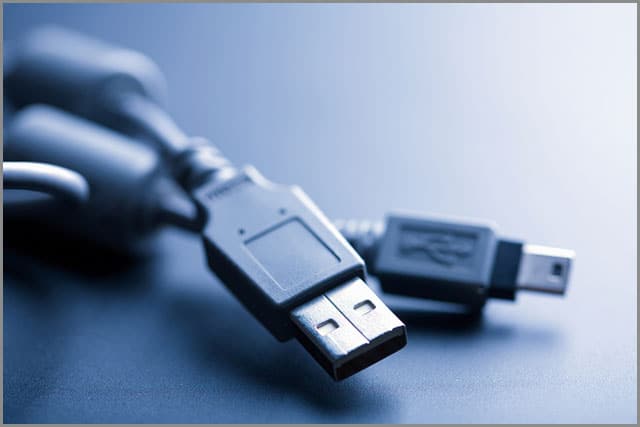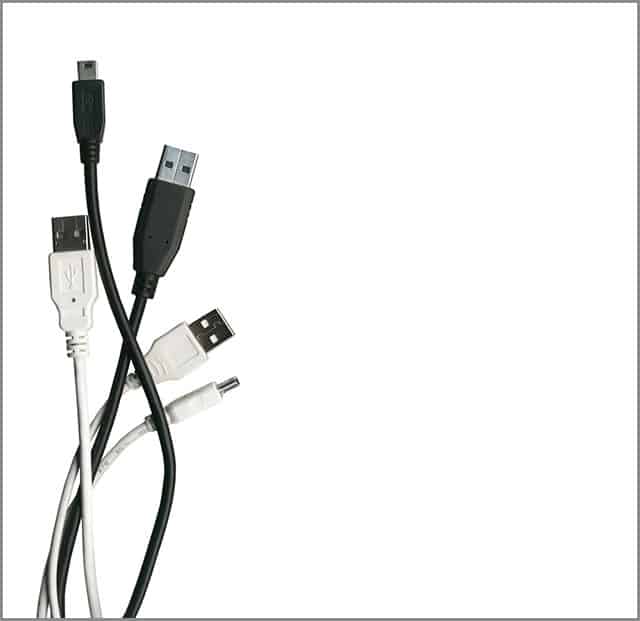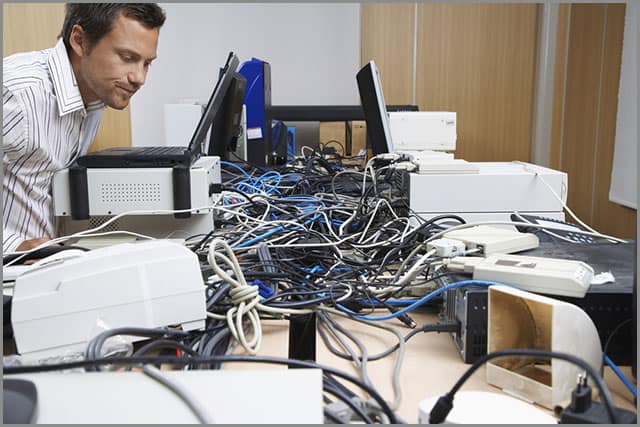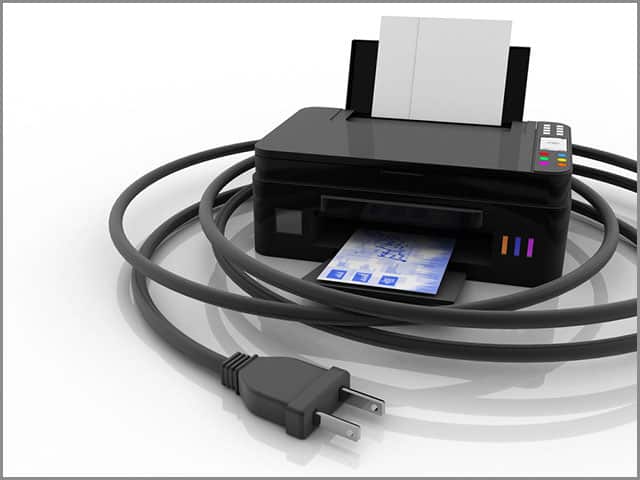Have you ever given a second thought to your printer cable? Printer cables may seem trivial, but they perform an essential function. Without printer cables, you will never be able to print your documents.
Do you know there are different types of printer cables?
You might not be aware, but there are many things to know about printer cables. So we have prepared this in-depth article to increase your knowledge on the topic. After reading, you will become an expert on printer cables and able to choose the right cable for your needs.
So, let’s begin our tutorial.
Get Your Free Sample!
Explore our custom services now. Email us at [email protected] for more details.
Chapter 1: Printer Cables

What is a Printer Cable?
Most of us know how to take print outs using a printer. If you have used a printer, you must connect it to your computer via a cable. The printer cable is the cable that connects the printer to your computer. The cable comes with a connector on both ends and transfers printing commands from the computer to the printer.
One end of the printer cable connects to the port on a computer. The other end fits into the port in your printer, setting up a connection between the two devices.
When you give the print command on your computer, the cable sends the information to the printer. Without a cable, your printer wouldn’t function or be able to print documents.
The printer cable facilitates two-way data transfer. It sends the print instructions to the printer and transmits messages or information from printer to computer. For example, the cable sends information related to ink levels, paper status, and printer details to the computer.
You can find different types of printer cables in the market. They vary in size, dimensions, and connection protocols.

text – printer cable machine use
In the next chapter, we will discuss all different types of printer cables.
Get Your Free Sample!
Explore our custom services now. Email us at [email protected] for more details.
Chapter 2: Types of Printer Cables
Printers have a long history of evolution, just like most computer peripherals. The earliest dot matrix printers used parallel cables while all new printers use USB cables. Let’s take a look at some of the printer cables in use-
1. USB Printer Cables
The USB standard has become the most common technology to hook up devices, including the printer. If your printer was manufactured any time in the last decade, there are high chances that it uses a USB connection.
The USB AB cable is the most widely used by present-day printers. The cables feature a USB-A plug at one end that fits into the standard female USB port on your computer. The USB-A end is flat and rectangular and can be recognized easily.
The other end comes with a USB-B plug and has a small, square shape. You need to connect this end to the USB port of your printer.
You will be able to find different types of USB printer cables in the market. Some of the common types include USB Type A, USB Type B, B5 pin, Mini B4, and Micro USB A-B. Printers use specific types of USB cables, so you need to make sure you are using the right type.
USB printer cables are capable of transferring data at high speeds of 480 Mbps. You can ideally use them for bigger projects and bulk printing.
One disadvantage of USB cables is that they are mostly available up to lengths of 16 feet. If the cables are any longer, the data transfer speed begins to drop as the distance increases.
Here’s a video of how to connect a USB cable printer cable to your computer-

2. Parallel Printer Cables
Parallel cables are one of the oldest types of printer cables used to connect dot matrix printers. Before the introduction of USB technology, people commonly used parallel cables. The cables come with flat, wide ends with a series of pins on the male connector. The male connector needs to plug into the female parallel port on the back of the dot matrix printer.
The parallel ports were introduced by IBM to connect their PCs with Centronics printers. Gradually other printer manufacturers also adopted the standard. Parallel printer cables can only transmit 50 to 100 kilobytes of data per second in a serial manner (unlike in a single row in case of serial cables).
The female connector of the parallel printer cable goes into the parallel port on computers. But today, it is not possible to find computers with a parallel port. So if you are using an old printer, you might face difficulties in establishing a connection.
In that case, you can go for an adapter cable. The adapter cable features a parallel connector on one end and a USB-A connector on the other. You have to connect the USB end to your computer and the parallel connector to the male end of the parallel printer cable.

Text – parallel printer cable use for computer
3. Serial Printer Cables
A serial printer cable connects your printer to your computer and transfers information based on the serial communication protocol. The early models of Mac computers used serial ports, but now the technology has been phased out by Apple. You will mostly find serial ports on computers manufactured before the year 2000.
Serial printer cables transfer data using bit-by-bit or serial port communication technologies. The printer cable features 9 to 25 pins at the male end. Serial cables are classified based on their standards and interfaces. The most common type of serial printer cables is the RS-232.
Serial printer cables can handle data speeds of 110 to 19,200 bits per second and are slower than USB or parallel cables. The cables use only two wires to transmit information each way and send data one bit at a time. They are quite cheap due to their simple nature and can connect the printer and computer over longer distances.
The computer and the printer need to have the same settings for a serial cable to work. If the devices have different settings, then the interface will be out of sync.
New Mac computers don’t have a serial port. So if you want to connect a printer that uses serial cables, you need to buy a serial to USB adapter cable.

Text – serial printer cable use for data
4. FireWire
FireWire cables use the Apple IEEE 1394 standard to secure high-speed communications and real-time data transfer. The standard developed by Apple during the 1980s and 1990s is used in printer cables to connect them to a computer.
FireWire cables support the plug-and-play feature like USB cables but can only accommodate 63 devices. The cables come with a data transfer speed of up to 400 Mbps using the High-Performance Serial Bus technology.
FireWire printer cables are thin serial cables and more convenient than parallel cables where space is restricted. The FireWire cables enable peer-to-peer connection and can connect two devices without the need for an intermediary computer.
FireWire ports still exist on some devices and desktops. They can also carry power along with data and suitable for distances of up to 15 feet.
You can compare the IEEE 1394 interface to USB because the latter can introduce FireWire and use In a short time.

Text – Printer cable use high speed transfer
Which Printer Cable should You Use?
You will need to use the printer cable that your printer supports. So if your printer uses serial ports, you will need a serial cable. If your computer supports USB, a USB printer cable is a way to go.
Almost all printers today support the USB standard and use USB printer cables. All platforms can use them, like Windows, Mac, and Linux, without any additional configuration. USB printer cables also transfer data at 480 Mbps and save get your printing done quickly.
Now that you know all about printer cables let’s find out what you need to consider while buying one!
Chapter 3: Buying Tips for Printer Cables

Buying a printer cable is easy and simple, though you need to keep a few things in mind. Let’s explore them!
1. Confirm the Compatibility
The first thing to ensure is that the printer cable is compatible with the printer and your computer. Check what cable your printer uses- is it a USB cable or serial cable?
Next, find out if your computer supports your printer cable. For example, you may need a converter if your printer uses serial cable and your computer only has USB ports.
You should also make sure that the system requirements and operating system support your printer cable.
2. Determine the Distance
Find out the distance between your printer and the computer. If the distance is too long for a standard printer cable to work, you may need a USB extension cable.

Text – Determine Printer USBextension cable distance
Are you wondering what a USB extension cable is? Read the next chapter to know more!
Chapter 4: USB Extension Cable
USB extension cables come to your rescue when your standard USB cable falls short. It’s a simple cable that can go a long way to connect your peripherals over a long distance.
What is USB Extension Cable?
Standard USB cables are a great way to connect the printer to the computer. Generally, USB cables are short, and you won’t find cables longer than 16 feet. The reason is that USB cables lose their effectiveness as the length increases and you will encounter a drop in transfer speed.
A USB extension cable is ideal in such situations to bridge the extra distance. The cable has a female end that plugs into the female end of the USB cable. On the other end, there is a male connector which plugs into your computer.
The USB extension cable is an affordable way to expand the range of your USB printer cable. You can set up a connection over a long distance and print your documents without hassles.

Text – USB Extension cable
How do You Extend USB Cable?
You don’t need to be a rocket scientist to use a USB extension cable. It’s super easy and doesn’t take more than a few seconds. The first thing to do is to purchase a USB extension cable for the required distance you need to cover. Then follow the steps below-
1. Determine the End to Connect
Your standard USB cable will have two ends- the “A” end which generally connects to the USB port on the computer, and the “B” end that connects to the printer.
If the “A” end connected to your computer, unplug the “A” end. Let the other end stay connected to your printer.
2. Join the Cables
Like we already discussed, the USB extension cable comes with a female end and a male end. Connect the male end or the “A” end of your regular USB printer cable to the female end of the extension cable.
Now the “B” end is of the USB is still connected to the printer while you have the “A” end of the extension cable free.
Keep in mind that the “A” end of the male ends of both cables are interchangeable. So you can connect both of them to standard USB ports.
3. Connect Extension Cable to Computer

You will now have to connect the “A” end of the extension cable to the female USB port of your computer.
Congrats! You have now successfully connected your printer to your computer using the USB extension cable.
Conclusion
Printer cables are indispensable for printing your documents. You need to buy a printer cable that is compatible with your printer to ensure smooth operation. If you would like to know more about printer cables or want to order a custom printer cable, we can help you out.
Get in touch with our team to discuss your printer cable project right now!
Hommer Zhao
Hommer Zhao serves as Director of Wiringo, leveraging a wealth of expertise in custom wire harness and cable assembly.
Drawing on more than a decade of hands-on expertise in the electronics field, Hommer focuses on wire harness manufacturing, custom cable assembly, and expedited restricted product production. His operations include a pair of wire harness production facilities and two dedicated PCB manufacturing & PCBA sites, all strategically located across Shijiazhuang, Shenzhen, Jiangmen, and the Philippines.
Hommer frequently refers to resources like Wiring Harness News for up-to-date insights and methods related to wire harness production.
Beyond his research and reading, Hommer also contributes to the Wiring Harness Manufacturer’s Association (WHMA), which offers invaluable resources and professional guidelines to wire harness specialists.
Get Your Free Sample!
Explore our custom services now. Email us at [email protected] for more details.



